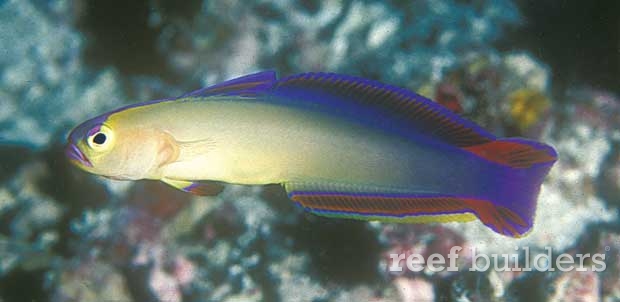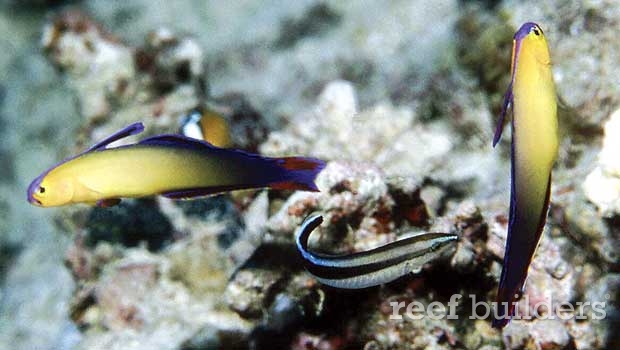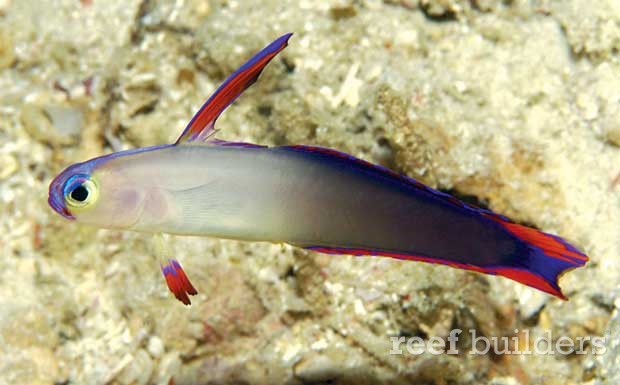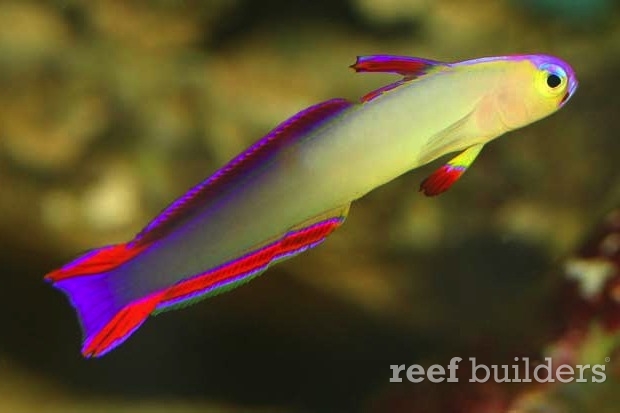The exquisite firefish, Nemateleotris exquisita, joins the small but illustrious group of reef fish which are endowed with equally flattering latin names. Hailing from the western Indian Ocean, the new exquisite firefish looks very similar to the well known purple firefish, Nemateleotris decora.
The new exquisite firefish was described from specimens collected in relatively deep water in Mauritius, Kwazulu-Natal and the Red Sea and it also known to occur on the Thai coast of the Andaman Sea, and the Andaman Islands. Some suspiciously large and bright purple firefish exported from the Maldives could be this new exquisite firefish species but hybrids of the purple and the exquisite firefish have been documented from this region. Like hybrids of regular and purple firefish, the resulting cross shows an even blend of both parents’ colors.

The exquisite firefish looks very similar to the purple firefish but it it lives deeper, grows larger, and has a more golden yellow body coloration which brightens the first two thirds of the body compared to the purple firefish which is dusky over the two thirds of its body from the tail. Overall the new exquisite firefish is more slender with a shorter face but the most obvious semi-defining characteristic is that Nemateleotris exquisita has a short first dorsal fin whereas N. decora usually has a much longer one.
We are not surprised that the purple firefish in the Western Indian Ocean is a different species, not only for its size but also for its coloration. If you’ve seen african specimens of the regular firefish, Nemateleotris magnifica, then you know what kind of size difference we’re talking about. Likewise, on the other side of the world, at the far eastern end of the range for the firefishes we find the deepwater Cooks Island Helfrich’s firefish which is quite different from the smaller Nemateleotris helfrichi we aquarists can get from the Marshall Islands.
It’s possible that we are already receiving some of the “new” exquisite firefish from Maldivian imports but confirmation will require further examination now that the species has been thoroughly identified. The fourth member of the Nemateleotris genus is described by John Randall and Allan Connell in the 8th volume of the Journal of the Ocean Science Foundation.





